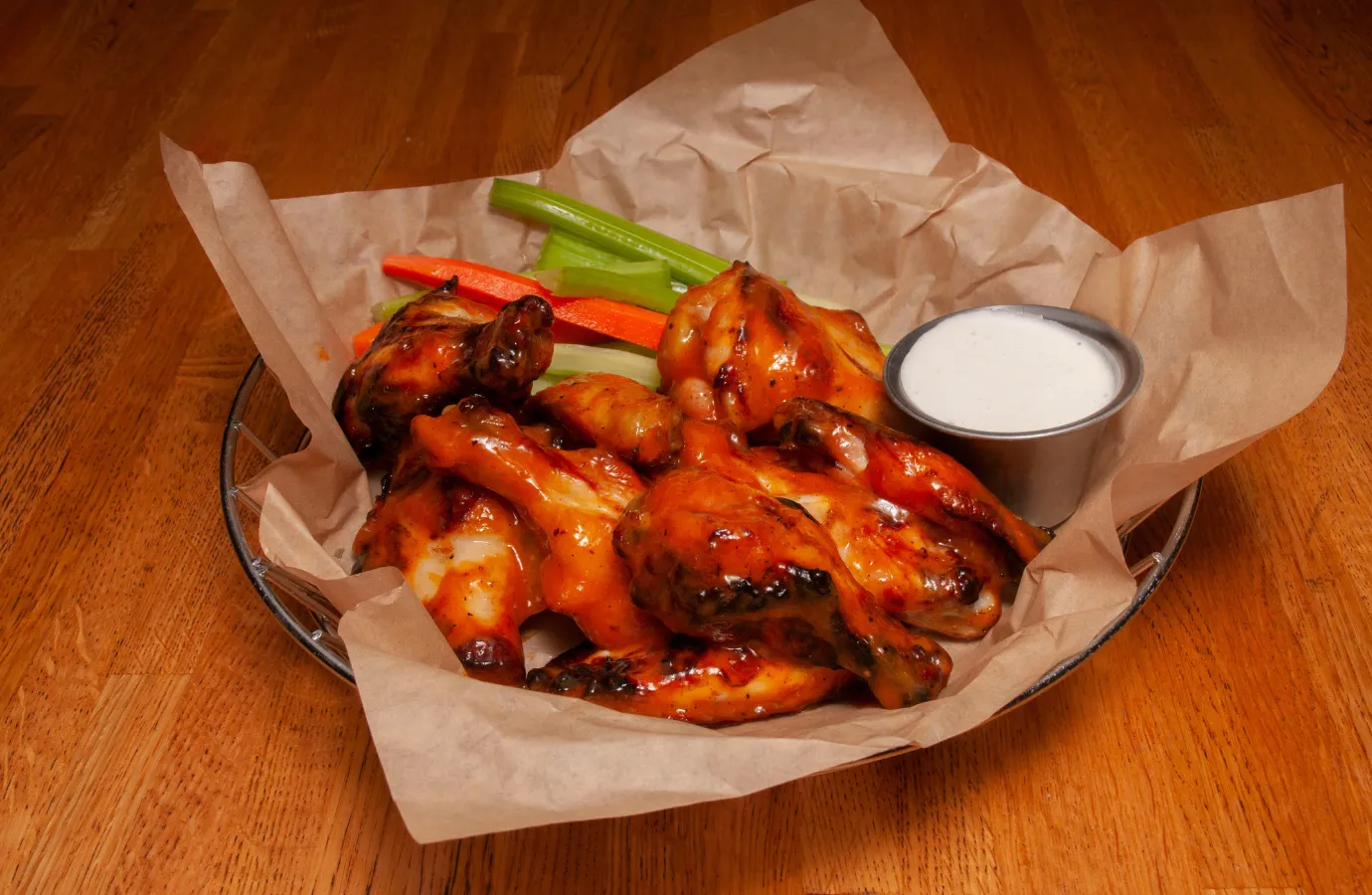
In the bustling world of fast foods and quick bites, buffalo tenders have carved out a niche for themselves, tantalizing the taste buds of millions with their spicy and savory zest. But, as we reach for that delightful crunch, a nagging question often lingers in the back of our minds: “How many calories are we talking about here?” This article dives deep into the caloric abyss of these popular eats, comparing them with other food choices, and offering a dollop of dietary advice on how to enjoy them without the guilt. So, buckle up as we embark on this flavorful journey, armed with a sprinkle of nutritional knowledge and a dash of healthy eating tips.
Introduction
Ah, buffalo tenders, a true pièce de résistance for the palate that craves that spicy kick! These delectable morsels have become a staple in the diet of many, finding their way into our hearts (and stomachs) with their irresistible charm. But, as we indulge in these mouth-watering treats, it’s crucial to pause and ponder over the nutritional information that accompanies each bite.
Understanding the caloric composition of what we eat is not just about counting numbers; it’s about making informed choices that align with our dietary needs and health goals. In the realm of fast food, where buffalo tenders reign supreme, being mindful of such details can make all the difference. So, let’s not beat around the bush any longer and dive into the nitty-gritty of what these tenders have to offer, beyond their fiery flavor and satisfying crunch.
Nutritional Overview of Buffalo Tenders
When you think of buffalo tenders, images of golden, crispy chicken drenched in a tangy buffalo sauce probably dance in your head. But, what’s the deal with their nutritional profile? Let’s break it down, shall we?
Subheading: Ingredients and Cooking Methods
At their core, buffalo tenders are strips of chicken breast, breaded or battered, then deep-fried to perfection. The pièce de résistance, the buffalo sauce, is a fiery concoction typically made from a vinegar-based cayenne pepper hot sauce and melted butter. It’s this combination that gives the tenders their signature kick and mouth-watering appeal.
However, not all tenders are created equal. The method of preparation plays a crucial role in determining the final calorie count. For instance, baking these bad boys instead of frying can shave off a significant number of calories, making them a tad lighter on your waistline.
Subheading: Caloric Composition
Now, onto the meaty details—quite literally! A single buffalo tender can pack anywhere from 100 to 200 calories, depending on its size and how it’s cooked. Dunk them in a generous serving of buffalo sauce, and you’re adding more calories to the mix. Plus, let’s not forget about the blue cheese or ranch dressing often served on the side for dipping. Yum, but yikes!
To put it in perspective, devouring five buffalo tenders could set you back by approximately 500 to 1000 calories, accounting for a substantial chunk of your daily caloric needs. Remember, an average adult’s daily intake should hover around 2000 to 2500 calories, varying by individual activity levels and metabolic rates.
So, what’s the takeaway? While buffalo tenders are undeniably delicious, their caloric impact is something to chew on. But fret not! By tweaking cooking methods and sauce choices, you can still savor the flavor without the calorie overload. It’s all about finding that sweet (or should we say spicy?) balance.
Comparison with Other Popular Foods

Now, let’s toss these buffalo tenders into the ring with other fast-food heavyweights and see how they stack up, calorie-wise. After all, when hunger strikes, it’s not just about quenching that appetite; it’s about making choices that don’t weigh heavily on your conscience—or your calorie count.
Subheading: Popular Fast Foods
Picture this: A juicy burger from your favorite fast-food joint, a large slice Calories in Buffalo Tenders f pepperoni pizza, or perhaps a serving of golden fries. These are the usual suspects when hunger calls. But how do they fare against our beloved buffalo tenders in the calorie count arena?
A typical fast-food burger can clock in at around 500 to 800 calories, while a large slice of pepperoni pizza might range from 300 to 400 calories. And those fries? A medium serving can easily add another 400 calories to your meal. Suddenly, those buffalo tenders don’t seem so daunting, do they?
Subheading: Impact of Serving Size
Here’s where it gets interesting. The devil, as they say, is in the details—or in this case, the serving size. While a single buffalo tender might seem like a calorie-conscious option, who stops at just one? It’s the total count that matters at the end of the meal, and those numbers can add up faster than you can say “pass the blue cheese dip, please.”
This is where buffalo tenders can either be a diet’s friend or foe. Opt for a moderate serving, say three to five tenders, and you’ve got yourself a meal that sits comfortably in the calorie range of a single fast-food burger or a couple of pizza slices. But go overboard, and you might find yourself in calorie overload territory.
So, what’s the moral of the story? Whether it’s buffalo tenders or any other fast-food favorite, portion control is key. By keeping an eye on serving sizes and making mindful choices, you can enjoy the flavors you love without tipping the scales. After all, it’s all Calories in Buffalo Tenders about balance, right?
Dietary Considerations
Indulging in buffalo tenders is one of life’s simple pleasures, but it’s also wise to zoom out and look at the broader picture of our dietary habits. Let’s explore how we can integrate these spicy delights into our diet without derailing our health goals.
Subheading: Understanding Caloric Needs
First things first, recognizing your daily caloric needs is paramount. It’s like setting the GPS before embarking on a journey; you need to know where you’re headed. For the average adult, the daily caloric intake hovers around 2,000 to 2,500 calories, but this is influenced by a plethora of factors including age, gender, activity level, and individual health goals. Whether you’re aiming to maintain, lose, or gain weight, calibrating your calorie intake accordingly is crucial.
Incorporating buffalo tenders into your diet doesn’t have to be a guilt-ridden affair. By being mindful of Calories in Buffalo Tenders your overall caloric intake and how these tenders fit into your dietary blueprint, you can relish them without remorse. Remember, moderation is the key to maintaining a balanced diet.
Subheading: Healthy Eating Tips
Now, let’s dish out some tips on enjoying buffalo tenders the healthy way. It’s not about giving them up entirely; it’s about smarter choices and better preparation methods.
- Go for Grilling or Baking: Instead of deep-frying, opt for grilling or baking your tenders. This method cuts down on the oil, slashing the calorie count significantly.
- Choose Leaner Cuts: Select lean cuts of chicken for your tenders. Breast meat, being lower in fat, is a great choice for a healthier version.
- Mind the Sauce: The buffalo sauce and dips can be calorie-laden traps. Consider making your own buffalo sauce with less butter and opt for yogurt-based dips instead of the traditional blue cheese or ranch.
- Veggie Load: Pair your tenders with a hearty serving of vegetables. Not only do they add color and crunch, but they also fill you up with fewer calories, ensuring you eat fewer tenders.
- Portion Control: Last but not least, be mindful of portions. Enjoying a few tenders as part of a balanced meal is far different from making them the meal itself.
By integrating these simple yet effective strategies, you can still enjoy the fiery pleasure of buffalo tenders without straying from your dietary goals. It’s all about making informed choices that cater to both your palate and your health. So, go ahead, savor those tenders, but remember to do so with a sprinkle Calories in Buffalo Tenders of moderation and a dash of mindfulness.
FAQs
Q1: Can buffalo tenders be part of a weight loss diet?
Absolutely! The secret sauce to including buffalo tenders in a weight loss diet is all about balance and preparation. Opting for baking or grilling instead of frying, choosing lean cuts of chicken, and being mindful of portion sizes can make buffalo tenders a perfectly acceptable indulgence. Remember, it’s the overall dietary pattern that counts, not just a single food item.
Q2: Are there lower-calorie alternatives to traditional buffalo tenders?
Yes, there are! For those looking to trim down the calorie count even further, consider using cauliflower or other vegetables as a base for your buffalo bites. Not only do these alternatives soak up the delicious buffalo sauce, but they also provide a nutritious and lower-calorie twist to the traditional tender. Check out this guide on ChooseMyPlate.gov for more ideas on healthy eating.
Q3: How do cooking methods impact the calorie content of buffalo tenders?
The cooking method can significantly impact the calorie content of buffalo tenders. Deep frying, while delicious, can double the calorie content due to the oil absorbed during cooking. On the flip side, baking or grilling tenders can drastically reduce the calorie count, making them a lighter option. It’s a simple switch that can have a Calories in Buffalo Tenders big impact on your meal’s nutritional profile.
Q4: What’s the best way to enjoy buffalo tenders without overindulging?
Mindful eating is the way to go. Start by serving yourself a reasonable portion of tenders, accompanied by plenty of vegetables or a fresh salad. Eating slowly and savoring each bite can also help you feel satisfied with less. And, if you’re dining out, don’t shy away from asking for sauces or dressings on the side to control how much you use.
Conclusion
As we wrap up our culinary journey through the world of buffalo tenders, it’s clear that these spicy delights can indeed find a place in a balanced diet. From understanding their caloric composition to exploring healthier cooking methods and portion control, we’ve armed ourselves with the knowledge needed to indulge wisely.
Embracing healthier alternatives, like baking instead of frying, opting for lean cuts of chicken, and serving up with a side of veggies, can transform this fast-food favorite into a meal that satisfies both our taste buds and our dietary needs. It’s all about making mindful choices that allow us to savor the flavors we love without tipping the scales.
Remember, enjoying food is one of life’s great pleasures, and buffalo tenders are no exception. By applying the tips and insights shared in this article, you can keep those spicy, savory tenders on the menu, guilt-free. So, go ahead, give in to your cravings—just do so with a dash of moderation and a sprinkle of nutritional awareness.
In the end, it’s not about denying ourselves the foods we love but about finding ways to enjoy them that align with our health goals. With a little creativity and a lot of mindfulness, even the spiciest of buffalo tenders can be part of a healthy, balanced diet. Cheers to that delicious balance!

This is a crucial subject—keep producing such remarkable content! Someone shared their personal weight loss story, highlighting the difficulties they encountered before discovering the Diet-To-Go Meal Service. They noted that the pre-portioned meals saved them time and supported their commitment to their goals. The conversation is a reminder of how essential balance is to the weight loss journey. For those who may find it useful, here’s the link they provided.
Did You Know? Cloudways makes cloud hosting a breeze, giving you a fast, friendly platform to build and grow your online presence.